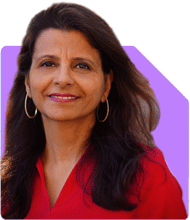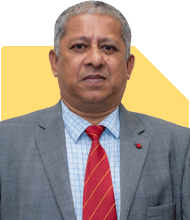Ramalingam Kalirajan |10071 Answers |Ask -Follow
Mutual Funds, Financial Planning Expert - Answered on Apr 23, 2025
He has an MBA in finance from the University of Madras and is a certified financial planner.
He is the director and chief financial planner at Holistic Investment, a Chennai-based firm that offers financial planning and wealth management advice.... more

My current age is 30 years I m investing 40 k per month in mutual fund my current monthly expenses are 1lac how can I achieve FIRE till 45
?
Clarity on FIRE Goal
FIRE means your investments should cover your future expenses.
?
At Rs. 1 lakh monthly expense now, expect higher needs later due to inflation.
?
In 15 years, even a simple 6% inflation will double your expenses.
?
So, your retirement kitty should replace Rs. 2 lakh monthly income, minimum.
?
This will need a very strong, dependable and inflation-beating portfolio.
?
We need to focus not only on growth but also on stability.
?
Let us plan your corpus target and back-calculate your ideal strategy.
?
Current Investment Pattern
You are investing Rs. 40,000 per month in mutual funds.
?
You didn’t mention the fund types. That’s very important to analyse.
?
If you use index funds or direct plans, that’s risky and passive.
?
Index funds don’t beat the market in tough years.
?
They just copy the market, even in bad times.
?
You need alpha, i.e., returns above index. Active funds do that better.
?
Certified Financial Planners guide better through MFD-based regular plans.
?
Regular plans with MFDs offer human advice and behavioural support.
?
Direct funds lack this. Most DIY investors stop SIPs in volatile times.
?
So, work with a CFP-guided MFD for disciplined investing.
?
Recommended Asset Allocation Strategy
Divide your investments based on purpose and time horizon.
?
Since your FIRE timeline is 15 years, you need a three-bucket system.
?
Let’s define these buckets for clarity.
?
Bucket 1: Wealth Creation for FIRE
60% of your investment should focus on long-term growth.
?
This means actively managed mid cap, small cap and flexi cap funds.
?
Choose only 1-2 funds per category. Don’t over-diversify.
?
Review every year. Switch only if fund underperforms for 2 years.
?
These funds are volatile, but they beat inflation well over long term.
?
Don’t touch this money till FIRE age of 45.
?
Reinvest all gains. Let it compound.
?
Bucket 2: Pre-FIRE Safety Corpus
25% should go to low volatility hybrid or balanced advantage funds.
?
This is your transition corpus. Start using this 1-2 years before FIRE.
?
These funds adjust equity-debt ratio automatically.
?
They give smoother returns in volatile markets.
?
Start building this bucket by your 40th birthday.
?
This will fund the early years of FIRE.
?
Bucket 3: Emergency + Goal Protection
15% of funds must be in liquid and ultra-short-term funds.
?
This covers emergencies, job loss, health, or family needs.
?
Never use this for spending. Replenish if used.
?
This gives peace of mind to continue SIPs during uncertain phases.
?
Other Financial Aspects You Must Plan For
FIRE is not just SIPs. There are other key things too.
?
1. Health Insurance Must Be Strong
You didn’t mention health cover. Rs. 25 lakh floater is minimum.
?
You’ll retire early. So no employer health cover after 45.
?
Take top-up policy above Rs. 5 lakh base policy now itself.
?
Buy non-network hospital cover also. This gives wider support.
?
2. Term Cover Must Be Reviewed
Life insurance is not for FIRE. It is for protecting dependents.
?
If you are single or spouse is working, reduce cover.
?
If spouse or parents depend on you, keep Rs. 1 crore to Rs. 2 crore.
?
Stop cover after you reach corpus. Don't pay premiums forever.
?
3. Track Your Expenses and Lifestyle Creep
Rs. 1 lakh expense today will not remain same.
?
Expenses will grow. Child, ageing parents, medical costs can rise.
?
Track your real inflation. Don’t use average number like 6%.
?
Lifestyle inflation is silent and dangerous.
?
FIRE fails if expenses go out of control. Track monthly.
?
4. Don’t Depend on Real Estate or Gold
Real estate is illiquid. It is not good for FIRE.
?
You can’t sell a part of house in emergency.
?
Gold is not productive. It gives no regular income.
?
Mutual funds are better. They offer liquidity, growth, and tax benefits.
?
5. Keep FIRE Income Stream Flexible
You can’t withdraw fixed 4% always. Market cycles vary.
?
Use Systematic Withdrawal Plan (SWP) from hybrid funds.
?
Withdraw only as needed. Keep 2-3 years of expense in debt funds.
?
Switch from equity to hybrid to debt slowly post FIRE.
?
6. Rebalance Every Year With CFP Help
Do portfolio review every 12 months.
?
Switch asset classes if ratios deviate from goal.
?
Use SIP top-ups if salary increases.
?
A Certified Financial Planner can help with this in disciplined way.
?
7. FIRE Doesn’t Mean No Work
Most early retirees still work part-time.
?
Passive income from hobbies or skills gives cushion.
?
FIRE gives freedom, not laziness. Use time to grow differently.
?
8. Know the New Tax Rules for Mutual Funds
Equity fund LTCG above Rs. 1.25 lakh taxed at 12.5%.
?
STCG from equity taxed at 20%.
?
Debt funds gains taxed as per income slab.
?
Plan withdrawal and SWP after FIRE carefully to avoid higher tax.
?
Keep equity invested beyond 1 year to save on tax.
?
Milestones To Achieve FIRE at 45
Rs. 3 crore to Rs. 4 crore is needed for basic FIRE at age 45.
?
For a family with moderate lifestyle, target Rs. 5 crore corpus.
?
SIP of Rs. 40K alone may fall short.
?
Try to increase SIP by 10% every year.
?
Add bonus or windfall into mutual funds, not lifestyle upgrades.
?
Start tracking net worth and yearly returns.
?
Financial Discipline Matters More Than Product
Stick to SIPs during market fall.
?
Don’t withdraw for short-term needs.
?
Avoid ULIPs, endowment, or combo policies.
?
If you already hold LIC or ULIP, surrender and move to mutual funds.
?
Don’t stop SIP even during job change or slow income phase.
?
FIRE success depends on discipline more than return.
?
Final Insights
FIRE at 45 is possible. You have made a good start.
?
You need higher SIPs, low expenses, and goal clarity.
?
Diversify across actively managed funds, not passive ones.
?
Use Certified Financial Planner advice regularly.
?
Be consistent. Don’t fear market fall. Stick to long-term plan.
?
Build SWP path to draw retirement income smartly.
?
Keep inflation and taxes in mind during withdrawal.
?
Stay invested. Review yearly. Enjoy life after FIRE.
?
Best Regards,
K. Ramalingam, MBA, CFP,
Chief Financial Planner,
www.holisticinvestment.in
https://www.youtube.com/@HolisticInvestment
You may like to see similar questions and answers below
Ramalingam Kalirajan |10071 Answers |Ask -Follow
Mutual Funds, Financial Planning Expert - Answered on Apr 29, 2024
Ramalingam Kalirajan |10071 Answers |Ask -Follow
Mutual Funds, Financial Planning Expert - Answered on Apr 24, 2024
Ramalingam Kalirajan |10071 Answers |Ask -Follow
Mutual Funds, Financial Planning Expert - Answered on Jun 04, 2024
Ramalingam Kalirajan |10071 Answers |Ask -Follow
Mutual Funds, Financial Planning Expert - Answered on Jul 13, 2024
Ramalingam Kalirajan |10071 Answers |Ask -Follow
Mutual Funds, Financial Planning Expert - Answered on Jul 16, 2024
Komal Jethmalani |410 Answers |Ask -Follow
Dietician, Diabetes Expert - Answered on Aug 02, 2025
Prof Suvasish Mukhopadhyay |2744 Answers |Ask -Follow
Career Counsellor - Answered on Aug 02, 2025
Prof Suvasish Mukhopadhyay |2744 Answers |Ask -Follow
Career Counsellor - Answered on Aug 02, 2025
Dr Nagarajan J S K |2129 Answers |Ask -Follow
NEET, Medical, Pharmacy Careers - Answered on Aug 01, 2025
Dr Nagarajan J S K |2129 Answers |Ask -Follow
NEET, Medical, Pharmacy Careers - Answered on Aug 01, 2025
Dr Nagarajan J S K |2129 Answers |Ask -Follow
NEET, Medical, Pharmacy Careers - Answered on Aug 01, 2025
Radheshyam Zanwar |6064 Answers |Ask -Follow
MHT-CET, IIT-JEE, NEET-UG Expert - Answered on Aug 01, 2025
Dr Nagarajan J S K |2129 Answers |Ask -Follow
NEET, Medical, Pharmacy Careers - Answered on Aug 01, 2025
Ramalingam Kalirajan |10071 Answers |Ask -Follow
Mutual Funds, Financial Planning Expert - Answered on Aug 01, 2025
Ramalingam Kalirajan |10071 Answers |Ask -Follow
Mutual Funds, Financial Planning Expert - Answered on Aug 01, 2025









.jpg)












